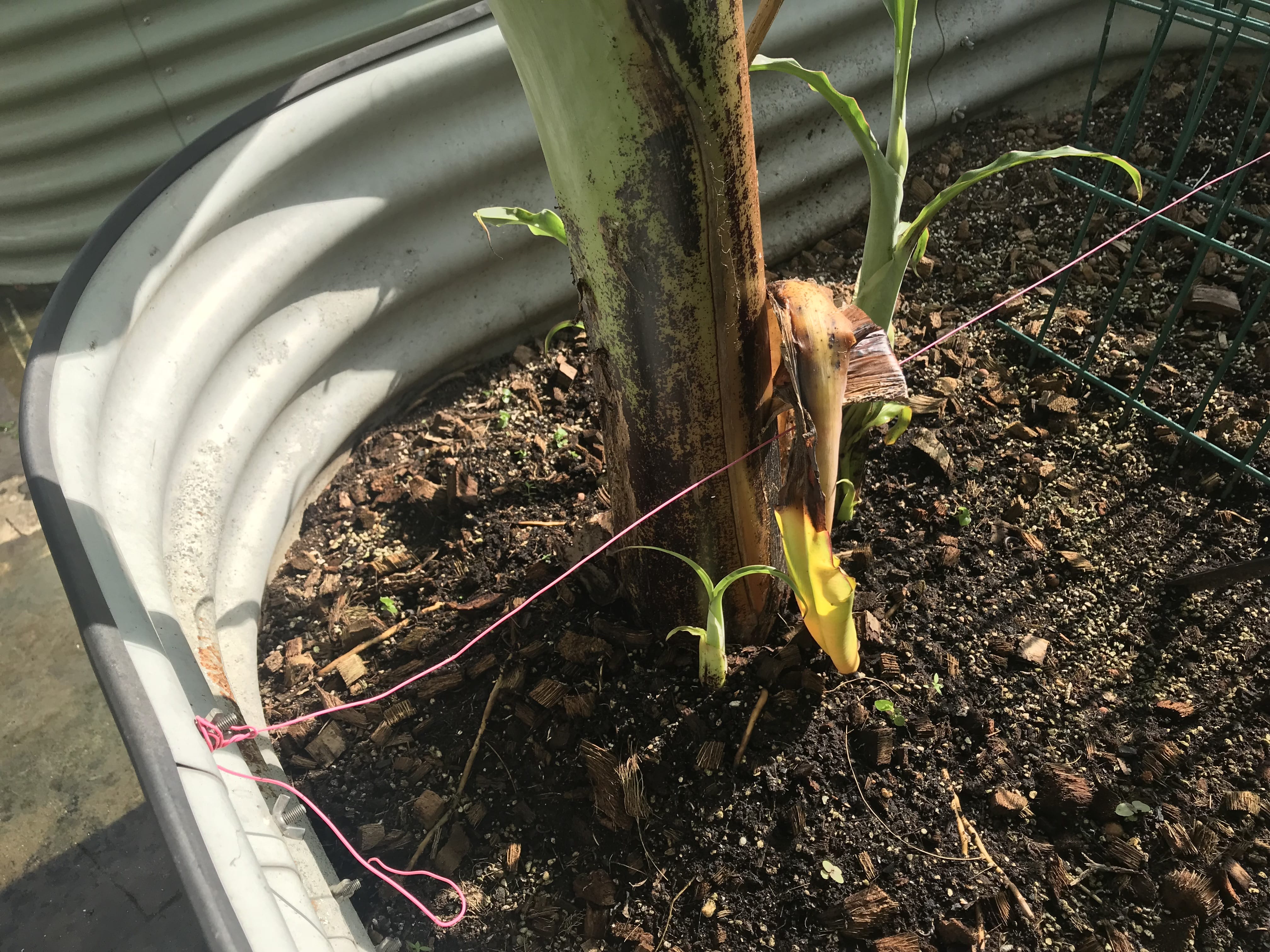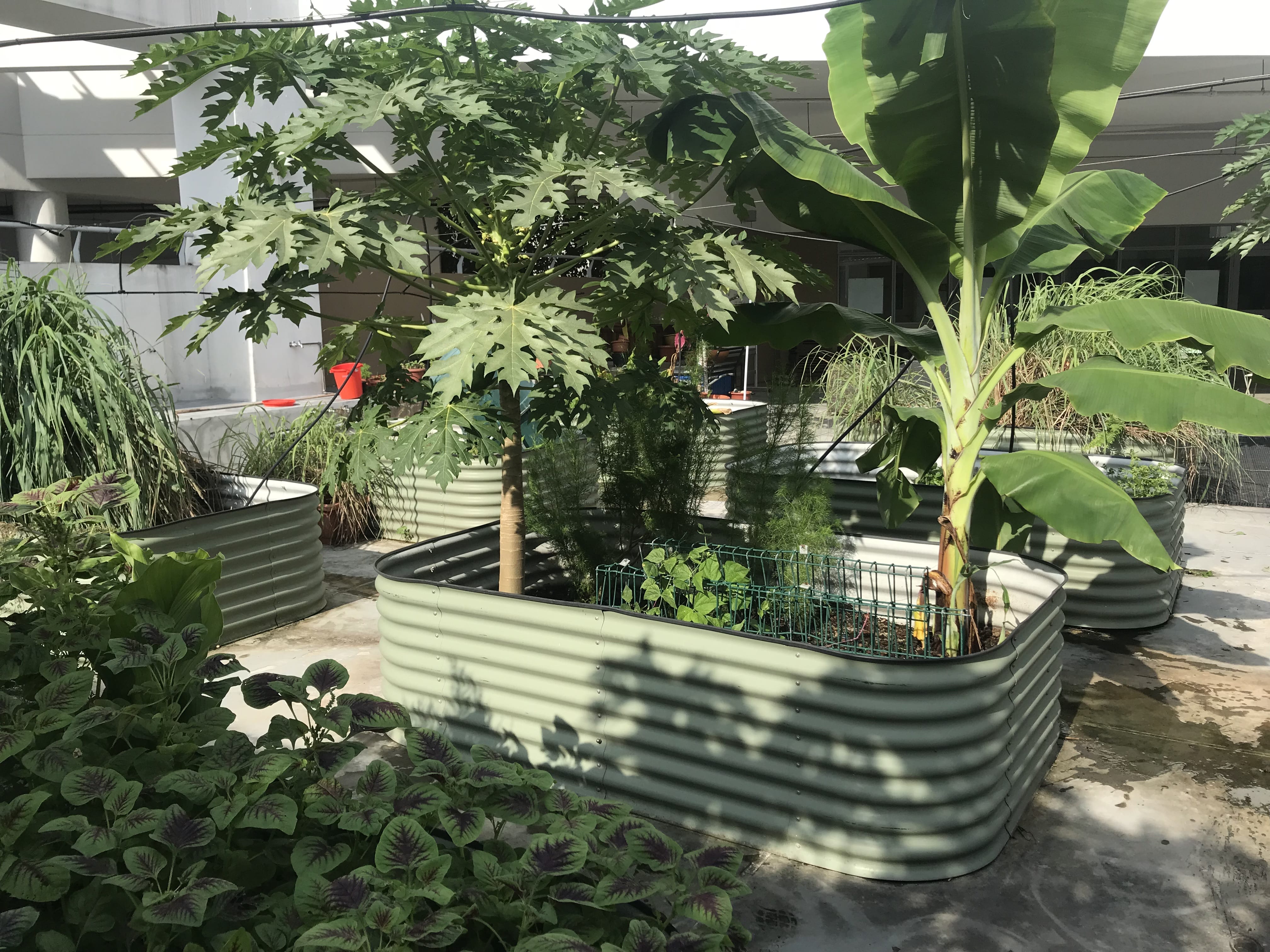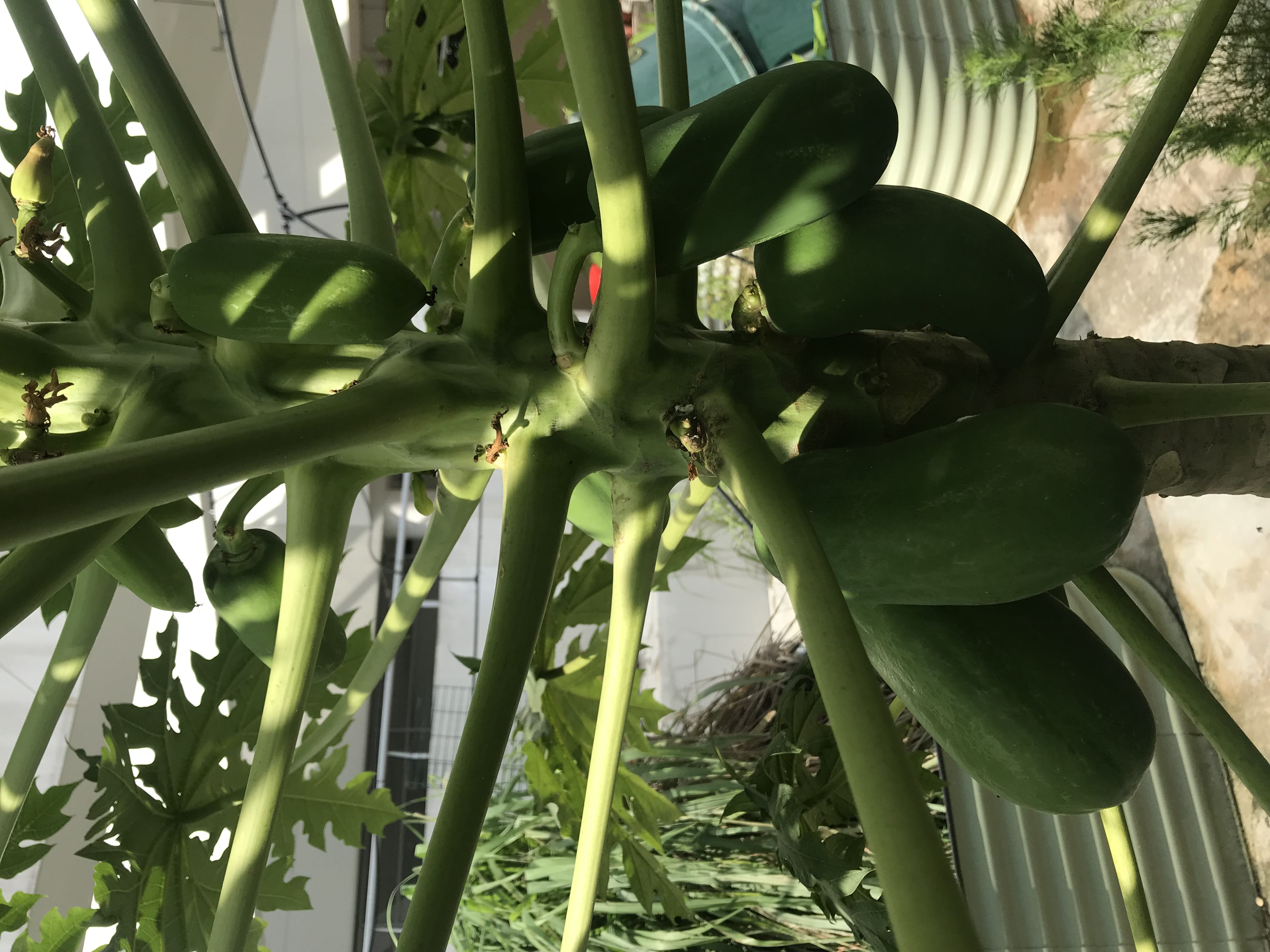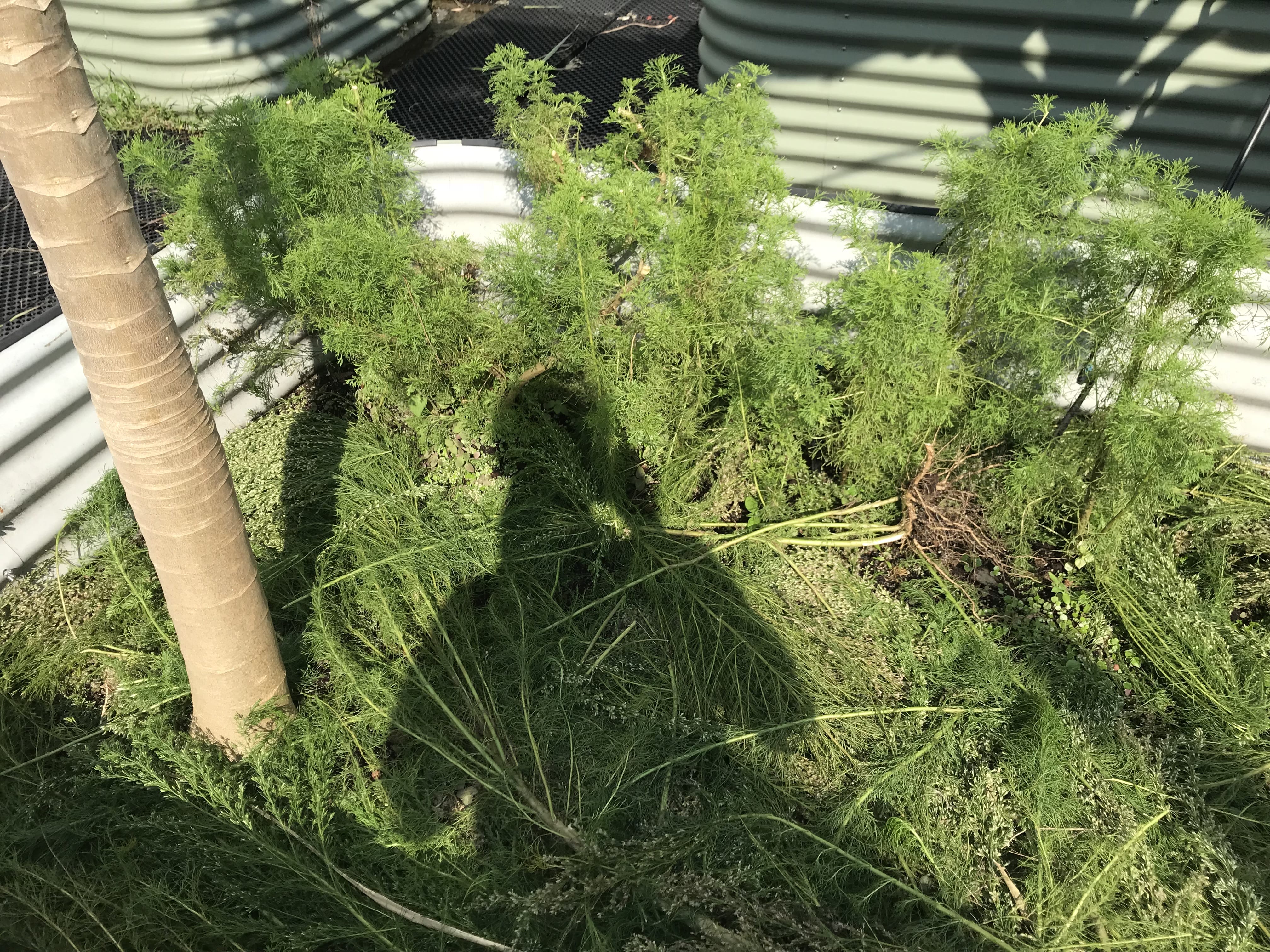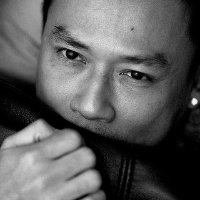Urban Gardening has been fun and exciting. Through this service, I have progressed quite a lot and have learnt much about gardening and sustainability. Although I had a vague idea that green rooftops were sustainable I wasn’t exactly sure why or how. Green roofs act almost as an insulation and so a building doesn’t need as much air conditioning as it would normally do. In addition, although Singapore has no winter season, green rooftops also act as an insulator to the cold during winter. Thus they reduce energy costs and the Urban Heat Island effect which is a process in which urban environments absorb heat making the hotter than the surrounding rural areas.
Green roofs also provide shade, remove air particulates (as in pollution, especially carbon dioxide) and produce oxygen. They last twice as long as normal roofs and reduce and sometimes slow stormwater runoff. So this is what I have been contributing to school and what I have learnt about green roofs in urban environments and sustainability.
Furthermore, I have developed many group skills such as communication, leadership and organisation which is needed to maintain a healthy garden and a well-contributing group. I have also learnt a lot about gardening which includes gardening skills such as transplanting, propagating, fertilising. Or tools such as the difference between spades and shovels, and what a hoe is used for. I have also learnt different types of plants and what they need or provide through research such as how beans (image below) grow fast, release nitrogen into the soil and need to grow on something:
I have learnt a lot more about plants and something interesting that I have learnt is how asexual banana plants will grow smaller banana plants around the main one, which started happening when I transplanted a banana plant to my bed:
Moreover, not only have I been contributing to environmental sustainability but I have also used the garden for other purposes such as giving fruits, mainly papaya, to Fresh Fruit Friday, a service aimed at providing fresh fruits for migrant workers. I have also been planning on providing vegetables to another service which aims to provide fresh vegetables to the school community, and planning to give information sessions to parents on how they can make their own garden, especially grow their own food. This service has in somewhat inspired me to be more environmentally aware and I have started to grow into my passion for the environment.
Below are some photos of the evolution of my and my partner’s garden bed.

